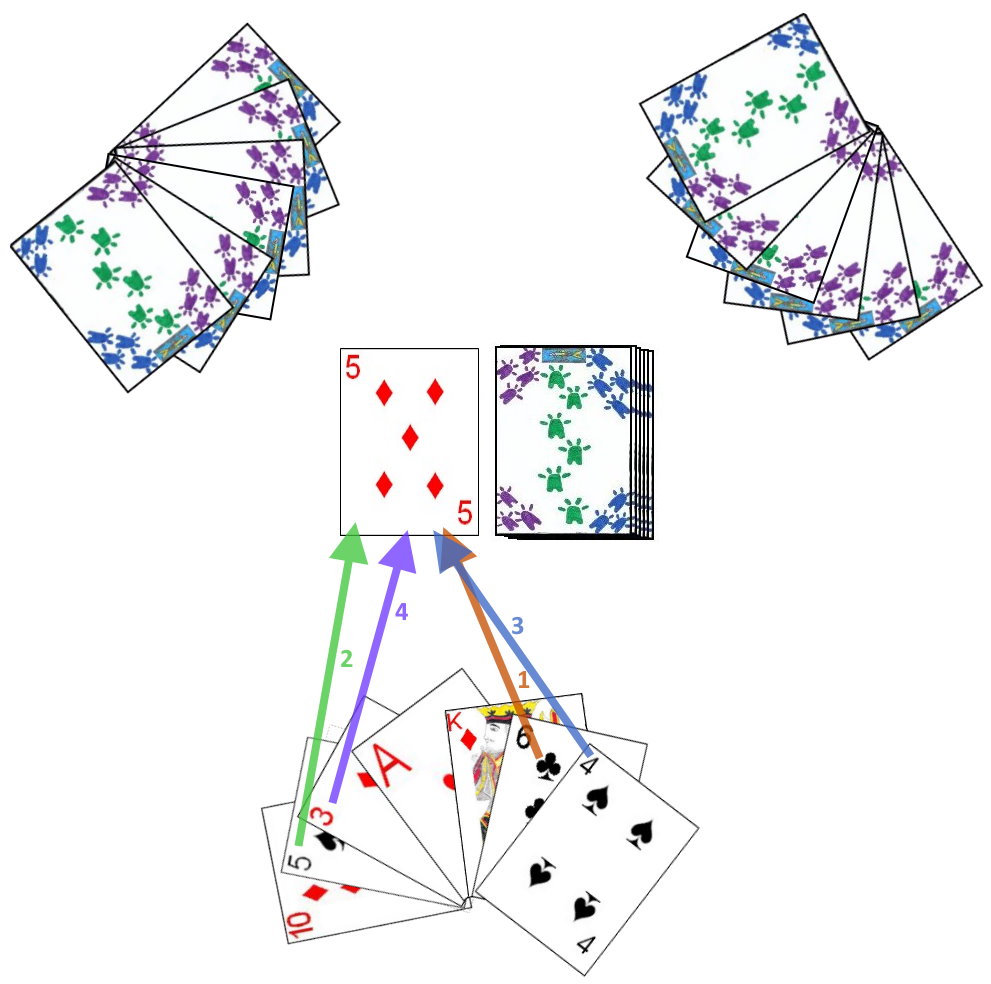Neosho Rapids is an easy to play card game designed for two to four players. The game appears to have been named after the geographic locale in which it was first played (the city of Neosho Rapids in the state of Kansas in the U.S.A. in which the city itself was named for the adjoining Neosho river).
Neosho Rapids is played using one standard 52 card deck. The sequencing of the cards in the deck used for the game are as follows (from lowest to highest); Ace, 2, 3, 4, 5, 6, 7, 8, 9, 10, Jack, Queen, King, Ace. It should be noted that Aces are considered both high and low for the purposes of sequences.
Determination of first dealer and seating positions can be by done using any number of methods, with draw for high card a common method. Each player would draw one card from the shuffled deck, with players taking seats at the table in order of cards drawn, from highest to lowest. The player drawing the highest card of all would be set as the first dealer. Thereafter the role of the dealer rotates in a clockwise direction around the table from player to player.
 Once the players are seated at the table and the first dealer determined, the dealer should thoroughly shuffle the deck and offer it to the player at his right to cut. After the cut, the dealer then begins dealing the cards around the table, starting the with the player at his immediate right and continuing in a clockwise direction. He deals the cards one at a time and face down around the table, continuing until each player (including himself) has a total of seven cards with which to form his hand. The dealer than places the remainder of the deck in a face-down pile in the center of the table (called the stock), taking the top card from this stock and placing it face-up beside the stock pile to begin the play pile.
Once the players are seated at the table and the first dealer determined, the dealer should thoroughly shuffle the deck and offer it to the player at his right to cut. After the cut, the dealer then begins dealing the cards around the table, starting the with the player at his immediate right and continuing in a clockwise direction. He deals the cards one at a time and face down around the table, continuing until each player (including himself) has a total of seven cards with which to form his hand. The dealer than places the remainder of the deck in a face-down pile in the center of the table (called the stock), taking the top card from this stock and placing it face-up beside the stock pile to begin the play pile.
The player to the immediate left of the dealer has the first turn, and the turns rotate around the table in a clockwise direction from player to player.
On each turn a player attempts to play cards from his hand to the play pile. A player may make a legal play to this pile if he has a card that is exactly one rank higher or lower than the current top card of the play pile (the suit of the cards is irrelevant). He may continue playing cards as long as the next card played is one rank higher or lower than the current, new card on the play pile. As should be noted from the card ranking as described previously, Aces are considered both high and low. As such, a sequence can thus be continued indefinitely, with an Ace played on either a two or King. Likewise, if an Ace is the current face-up card on the play pile, a legal play would be either a King or a two.
A player may continue playing cards until he no longer has any legal plays (or opts not to make further plays). He then ends his turn by drawing one card from the face-down stock pile, adding that card to his hand. The turn then moves to the next player.
If the stock runs out of cards after a player draws a card from that pile to end his turn, all cards in the play pile below the top card should be shuffled together and placed to form a new face-down draw pile.
The game continues until a player manages on his turn to play his last card, after which time that player is declared the winner of the game.